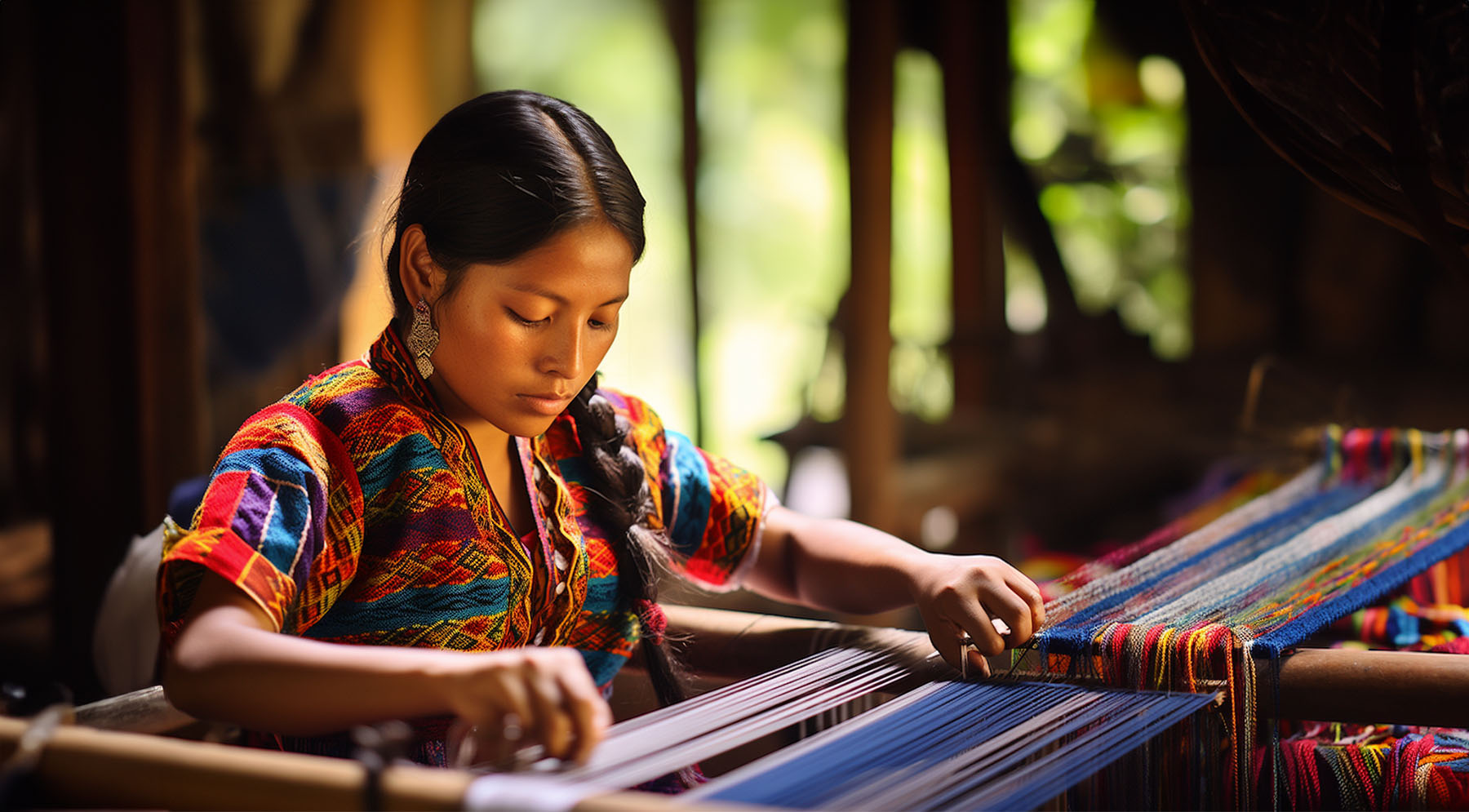
Guatemalan Textile Weaving - A Tapestry of Tradition
While I don't pretend to have the patience and attention to detail required to create the masterpieces I sell, I know full well that at the heart of my collection lies this incredible art of weaving, a skill deeply rooted in Guatemala's cultural tapestry.
Many times I have visited and watched the weaving artisans at work in Guatemala, marvelling at their skill and the sheer amount of time and concentrated attention spent on each textile. So here I will attempt to explain the four different types of hand weaving that make up my pillow collection.
1. Brocade Weaving
This is my favourite style textile, the highly decorative and ornate huipiles that I adore are mostly made by brocade weaving. Brocade huipiles are kept for special occasions and ceremonial garments and are known for their opulence and rich visual appeal.

I. Preparation:
The process begins with the selection of a base fabric, sometimes made from naturally dyed cotton threads. The weaver sets up their back strap loom with the warp threads that form the foundation of the fabric.
These are additional threads, typically a contrasting colour or texture, that are carefully integrated into the fabric. These threads are used to create the decorative patterns and designs.
III. Insertion of Supplementary Weft:
Using a supplementary weft thread, the weaver hand-guides it into the fabric, following a chosen brocade pattern. This is a highly skilled and labor-intensive process that requires precision and attention to detail.

IV. Tightening and Consistency:
Maintaining consistent tension in the supplementary weft threads is crucial to ensure that the pattern is clear and well-defined. The weaver carefully adjusts the tension as they work.
V. Repeated Motifs:
To create complex and detailed brocade designs, weavers often repeat specific motifs throughout the textile. These motifs hold cultural significance and convey stories unique to the Mayan community or artisan.
Supplemental Weft also known as supplementary weft or extra weft, refers to the additional thread or yarn used in weaving to create patterns or designs on the fabric.
- Technique: Unlike brocade, supplemental weft is a broader term that encompasses various techniques where additional weft threads are added to create patterns.
- Process: In supplemental weft techniques, the additional weft is introduced selectively to form patterns or images. This can include techniques like brocade, tapestry weaving, and other methods where the extra weft is used to embellish the fabric.
2. Backstrap Weaving
This style weaving is how the Guatemalan women's cortes (traditional Mayan skirts) are made. A simpler and more straightforward hand weaving technique compared to complex methods like brocade or supplementary weft weaving.
I. Setup and Loom:
Backstrap weaving is known for its simplicity in terms of equipment. It involves a narrow and portable loom that is simple in construction. The loom typically consists of two horizontal bars—one attached to a stationary object, like a tree or a post, and the other attached to a belt worn by the weaver, which is why it's called ‘backstrap’ weaving.

II. Weaving Process:
The weaver sits on the ground or on a stool with their backstrap belt securely fastened around their lower back, providing tension to the warp threads (vertical threads) of the loom. The weaver controls the tension by leaning forward or backward, adjusting the tightness of the warp threads.
III. Warp and Weft Threads:
Backstrap weaving involves two sets of threads: warp threads and weft threads. The warp threads are the foundation and are vertically stretched on the loom. The weft threads are passed horizontally through the warp threads to create the fabric.
IV. Tension Control:
The weaver manually adjusts the tension on the warp threads using their body movements. This is a critical skill and requires a high degree of precision. Proper tension control ensures that the fabric is even and the patterns are well-defined.
3. Ikat Weaving
Also known as "tie-dye" or "resist dyeing," Ikat is a textile technique that involves dyeing threads before weaving to create intricate, blurred, and sometimes multi-coloured patterns. While I love the end result of ikat textiles, I am flabbergasted at just how much time and effort goes into creating these simple patterns.
I. Warp Tying and Binding:To create the resist-dye effect, the warp threads are tied and bound using wax or yarn. These bindings prevent the dye from penetrating the tied sections, creating areas where the original colour of the thread remains unchanged.

II. Dyeing Process:
The tied and bound warp threads are submerged in dye baths to apply the desired colours. The dyes are absorbed by the untied sections of the threads, while the tied sections resist the dye. This is repeated for each colour in the design.

The order in which the colours are applied is critical. The weaver must carefully plan the dyeing sequence to ensure that the colours are layered correctly on the warp threads, creating the desired final pattern.
iV. Warp Preparation:
Once the dyed threads are ready, they are arranged in the correct order on the loom for weaving. This process can be meticulous, as the weaver must ensure that the dyed sections align precisely with the intended pattern.

V. Weaving:
The weaver uses the dyed warp threads in combination with weft threads to create the fabric. The weaving process can be labor-intensive, requiring careful attention to maintain the alignment of the dyed sections and achieve the desired pattern.
VI. Pattern Alignment:
Achieving precise alignment of the dyed sections during weaving is a testament to the weaver's skill. This can be particularly challenging, as the patterns must match across multiple warp threads.
![]()
4. Foot Loom Weaving
Most of the new Guatemalan cortes that are sold at the markets are made using a foot loom for speed. The foot loom is a wooden structure that includes vertical supports and horizontal bars to hold the warp threads. In a dance of coordination between hands and feet, the weaver transforms threads into fabric.
I. Preparation:
The loom is set up with warp threads, running vertically. These threads are the foundation of the fabric.
II. Weaving:
The weaver, seated at the loom, uses pedals with their feet to control the rhythm. With each press and lift, the shuttle, carrying the horizontal weft threads, glides through the warp.
III. Tension and Pace:
The weaver's dance with the pedals regulates the tension and pace of the weaving, ensuring a balanced and even fabric.

Anyone who has read this far has an obvious interest in and love of handwoven textiles. By supporting these skilled artisans, we contribute to the sustainability of their craft, empowering communities and fostering a profound appreciation for the artistry embedded in every thread.
May the colours and patterns woven into these fabrics serve as a lasting reminder of the enduring spirit and creativity of the Mayan people.
If you have any questions or comments about this blog I'd love to here them. You can contact me here or message me on my Instagram page.
Willow xx

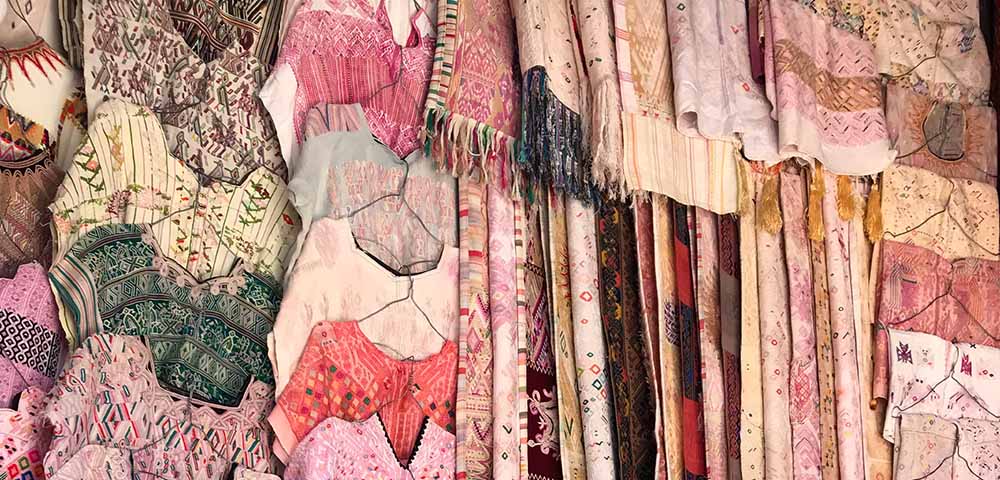
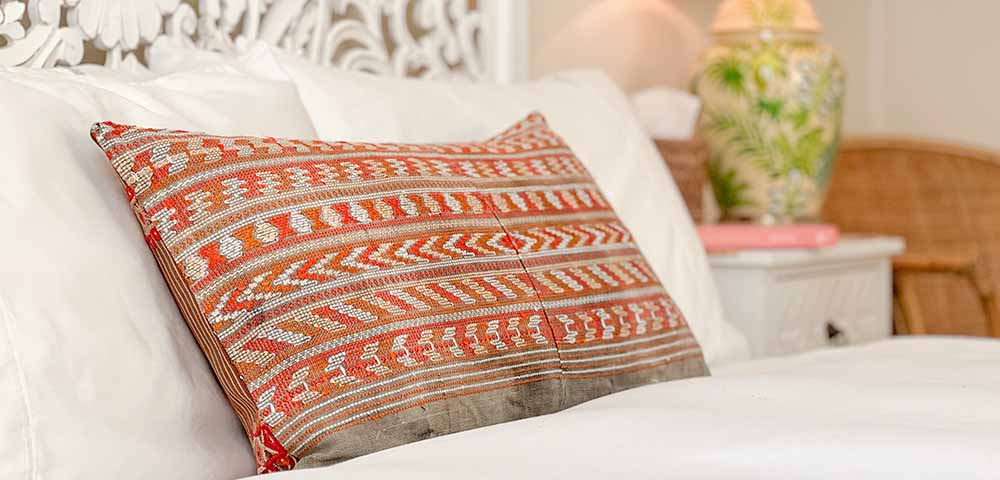


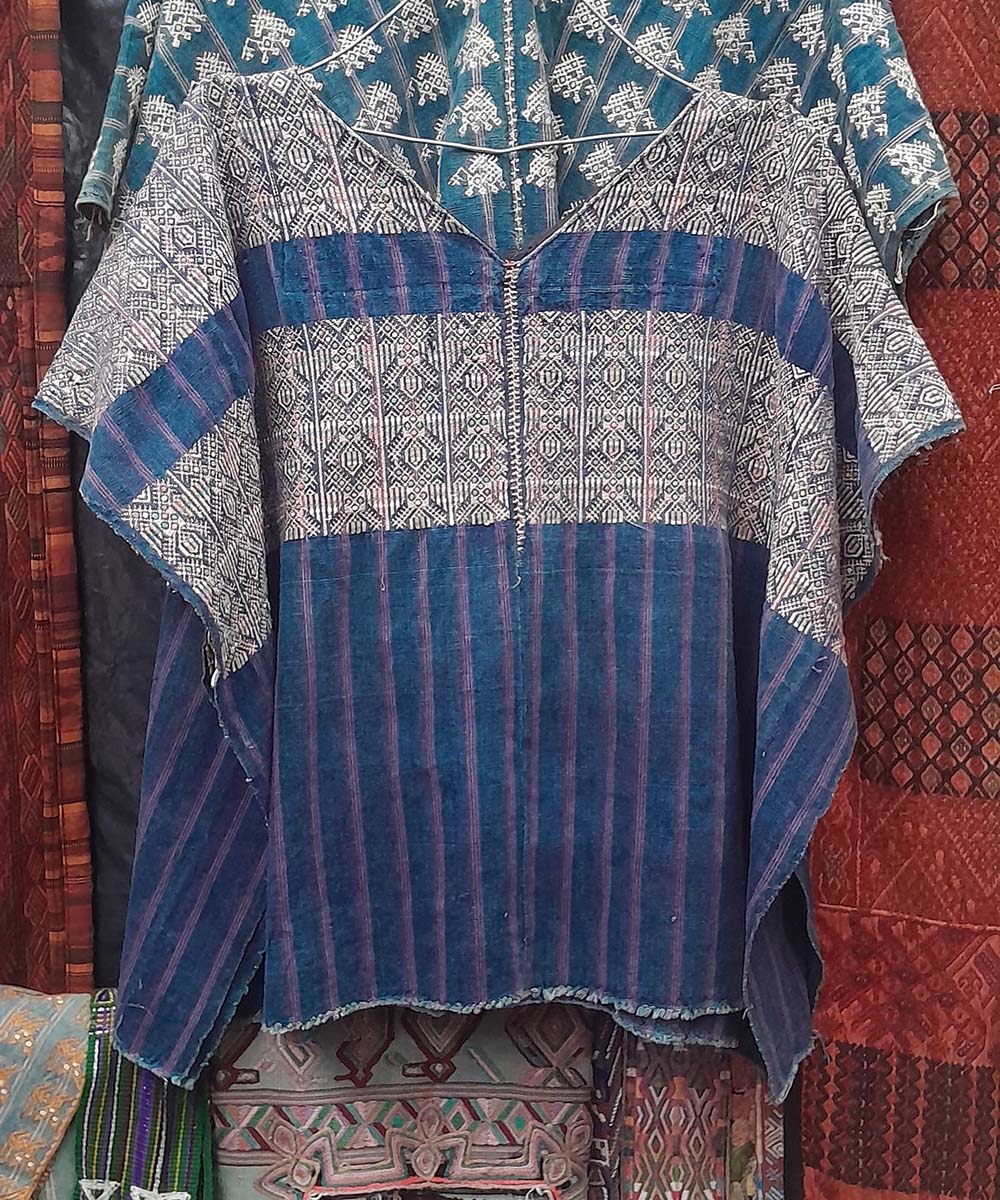
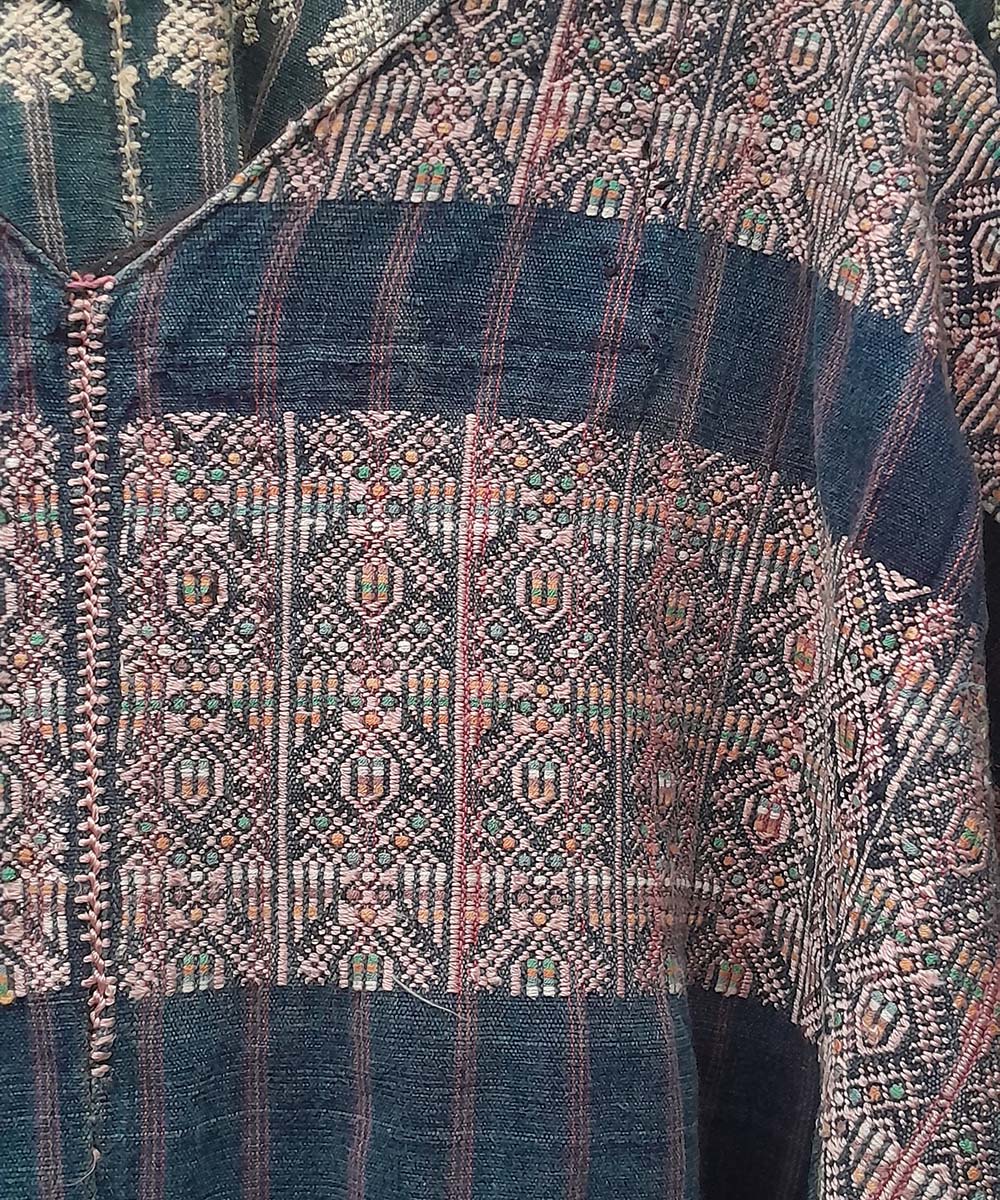
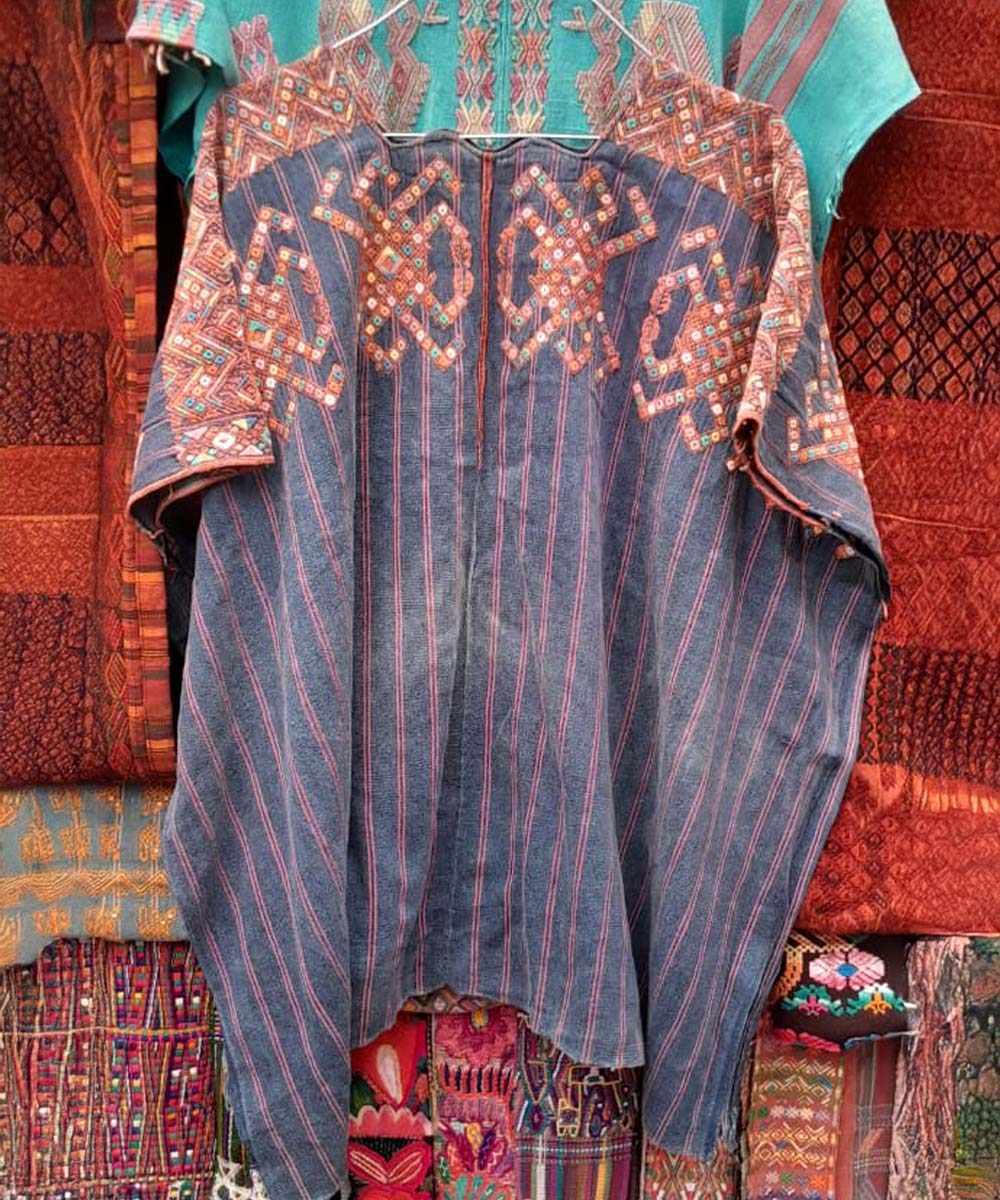
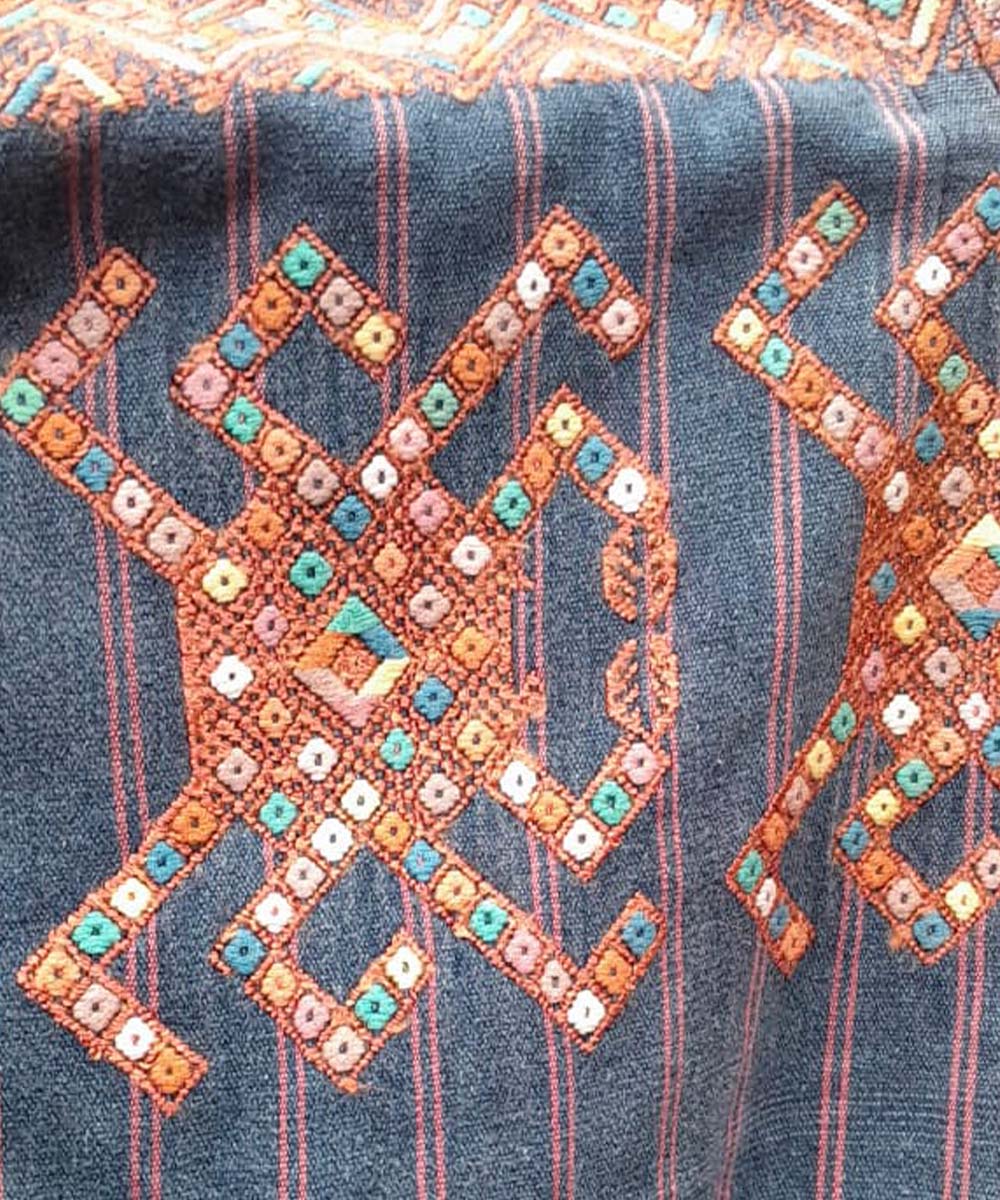
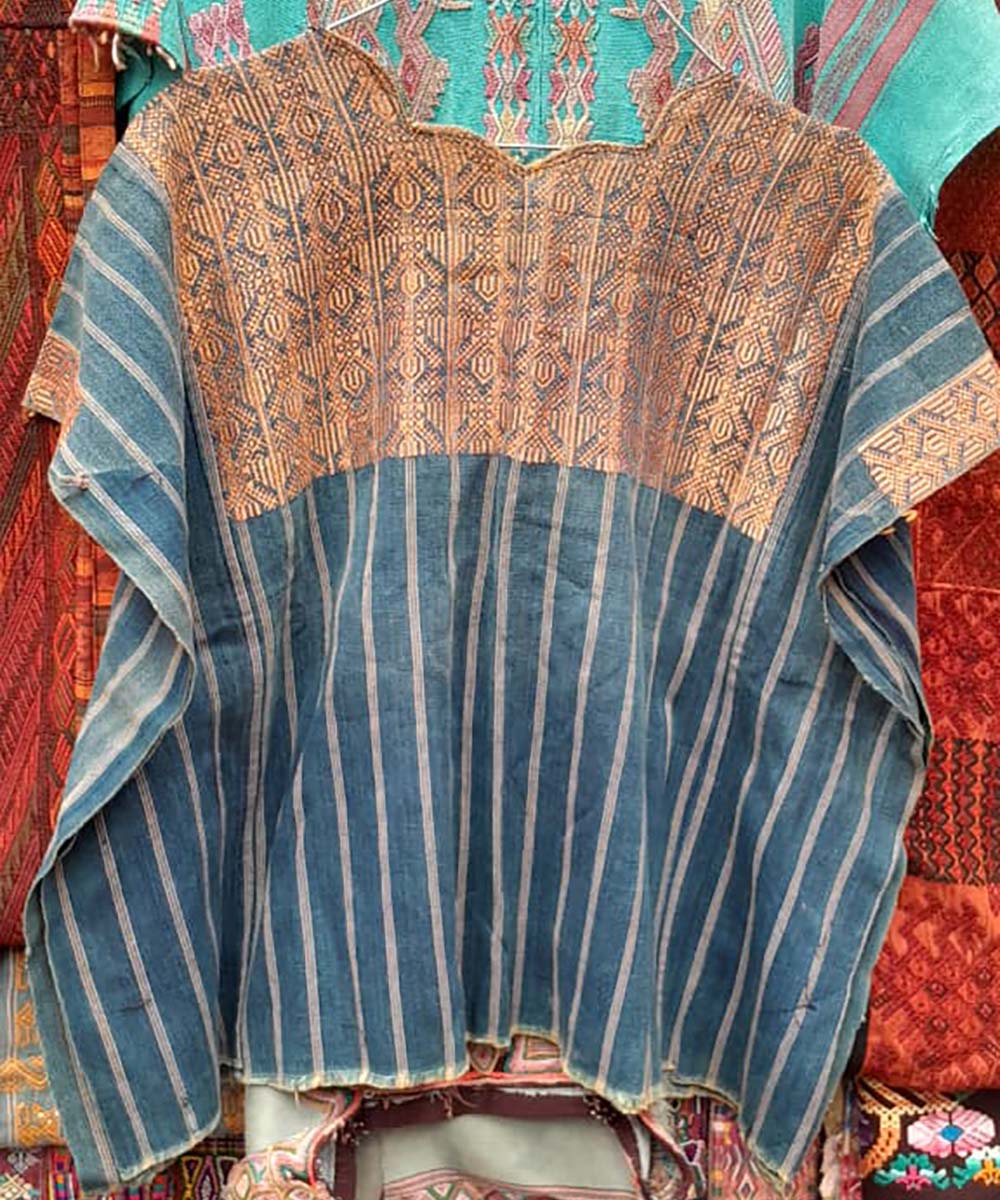
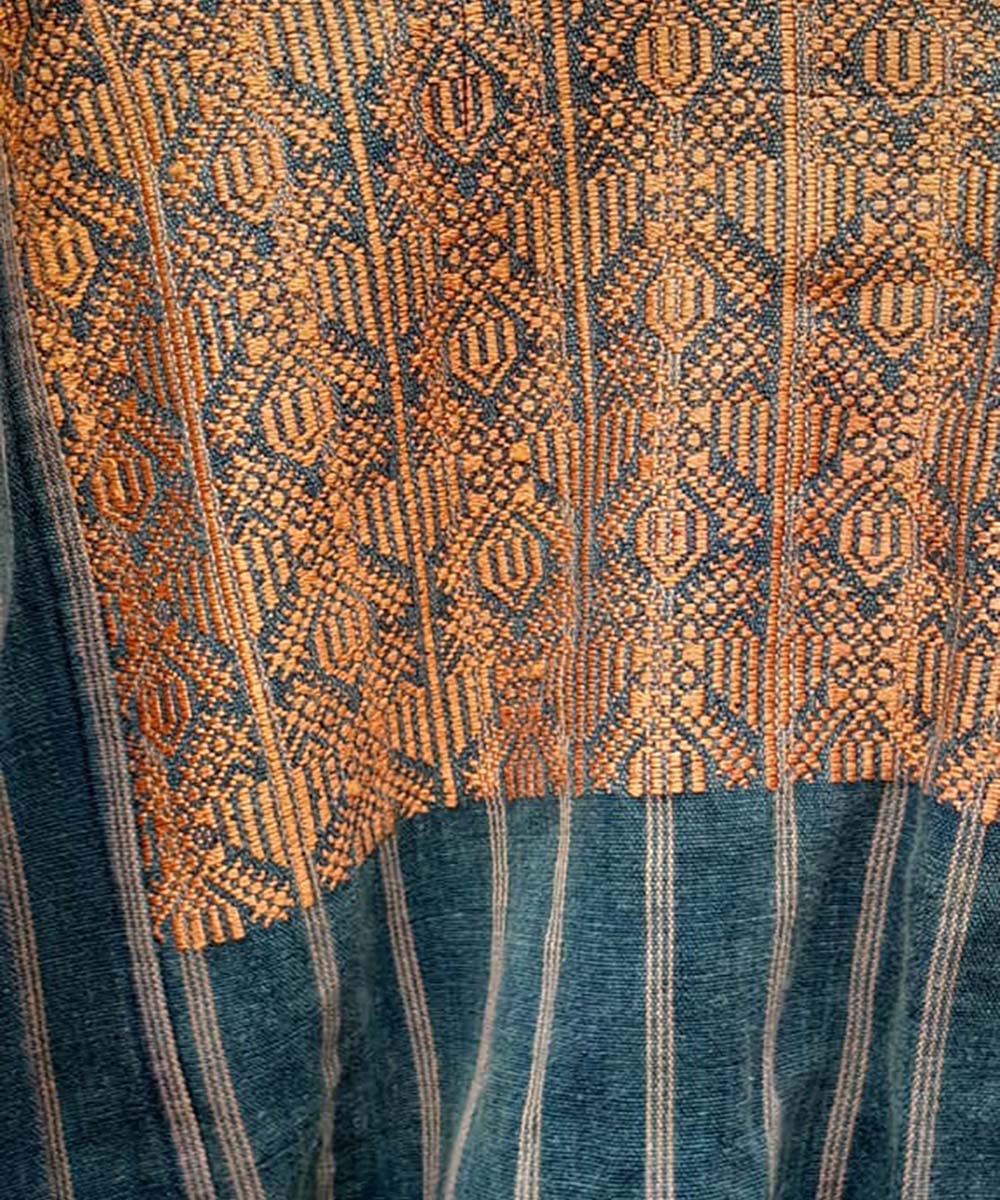
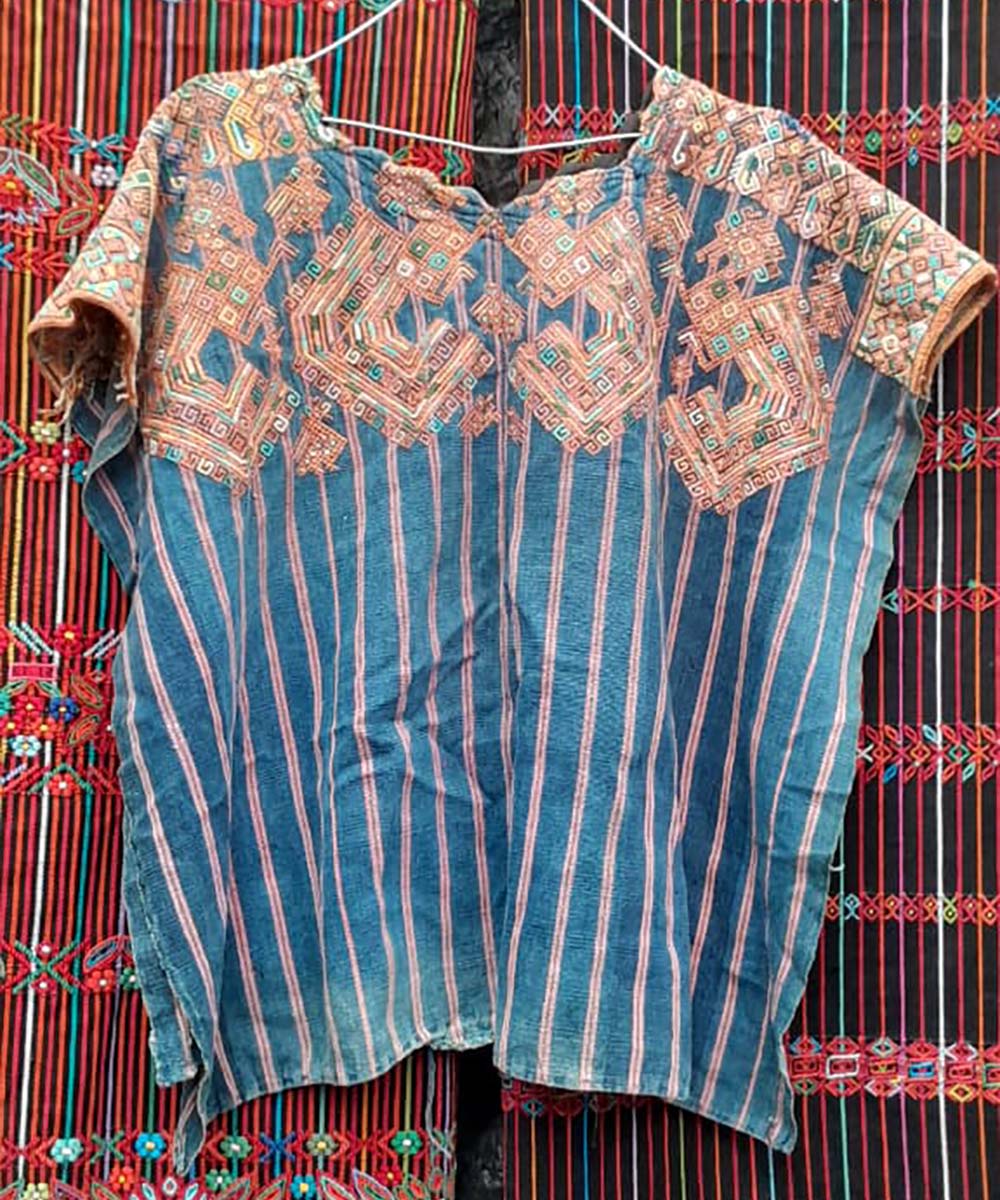
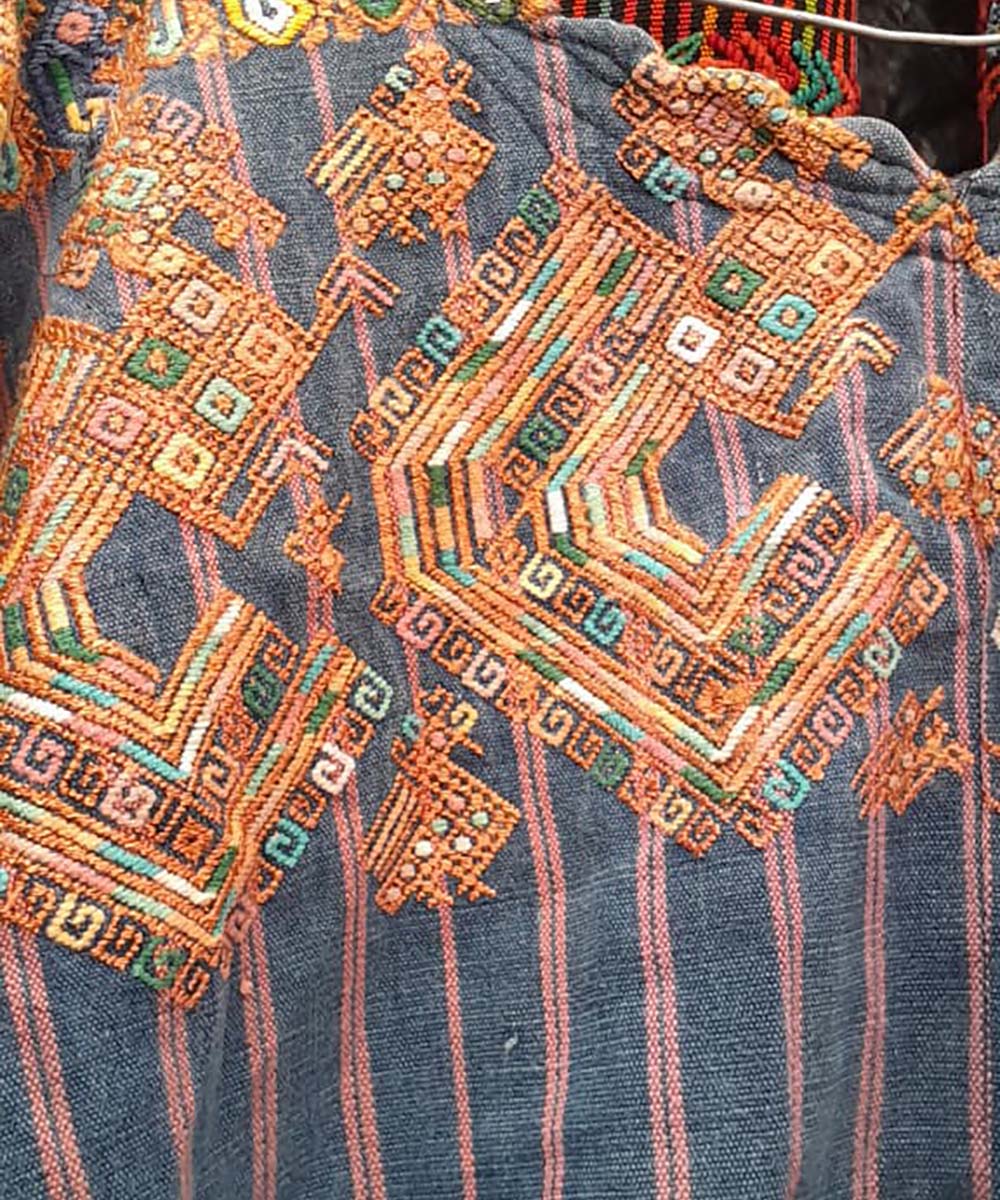

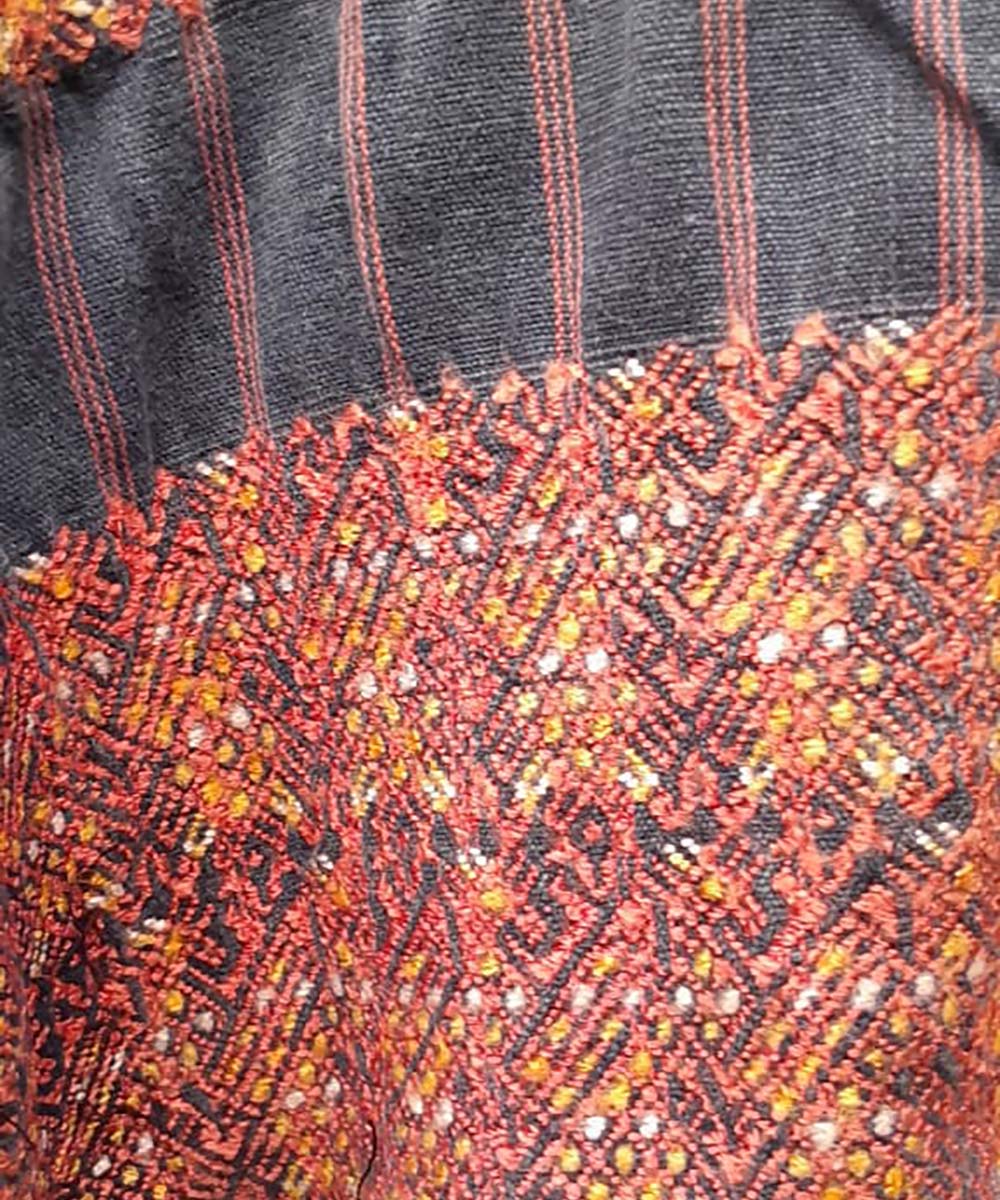
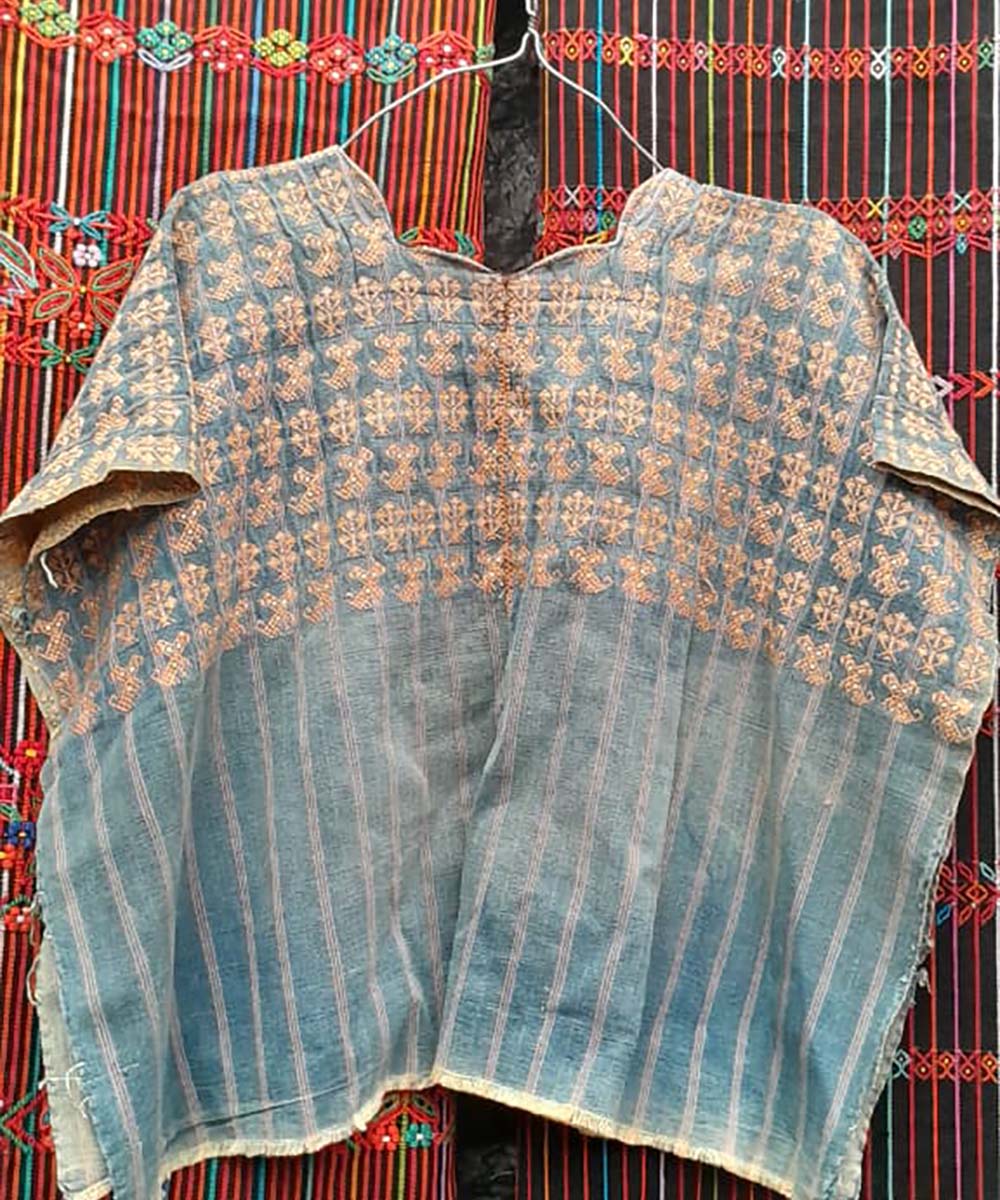
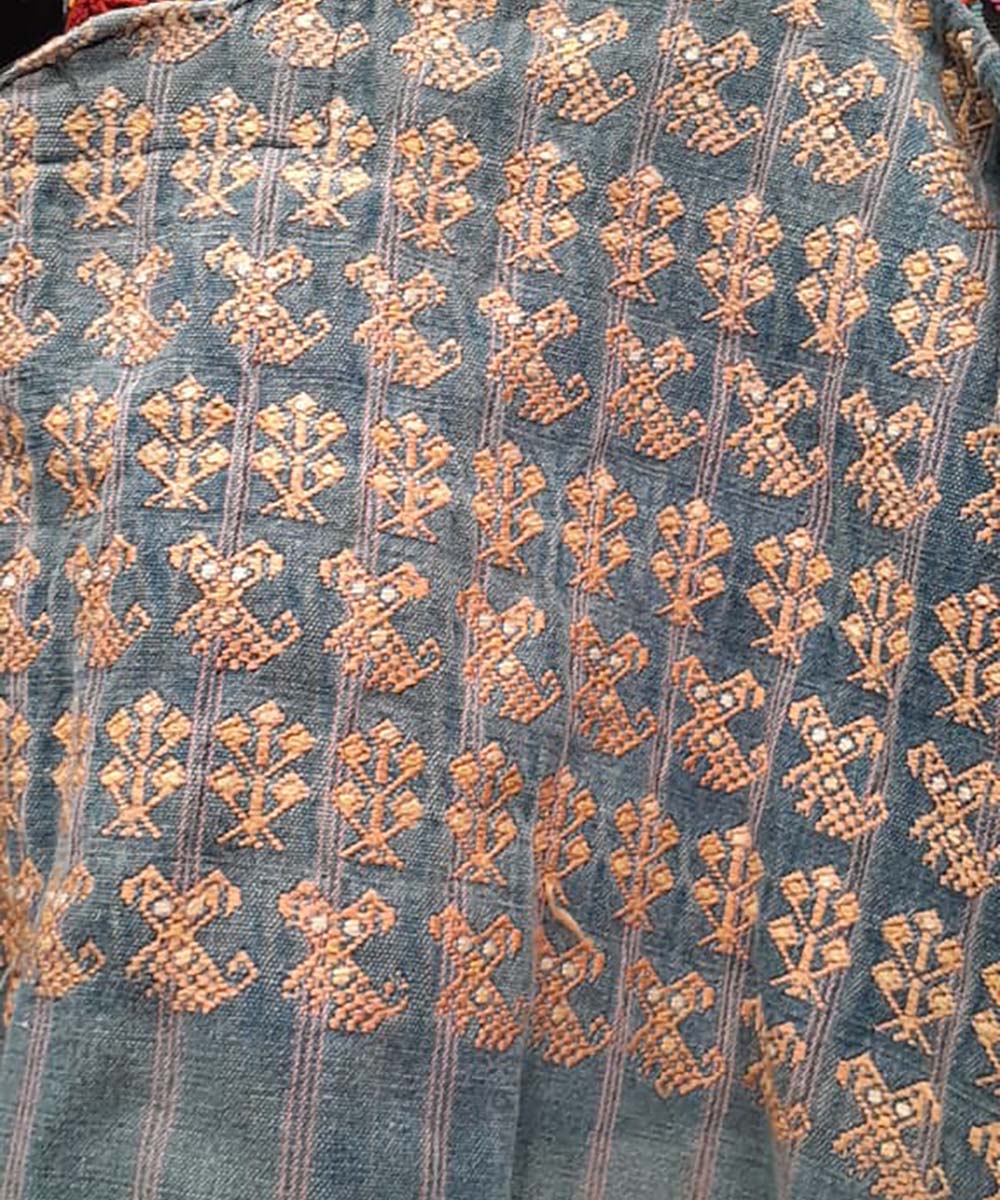
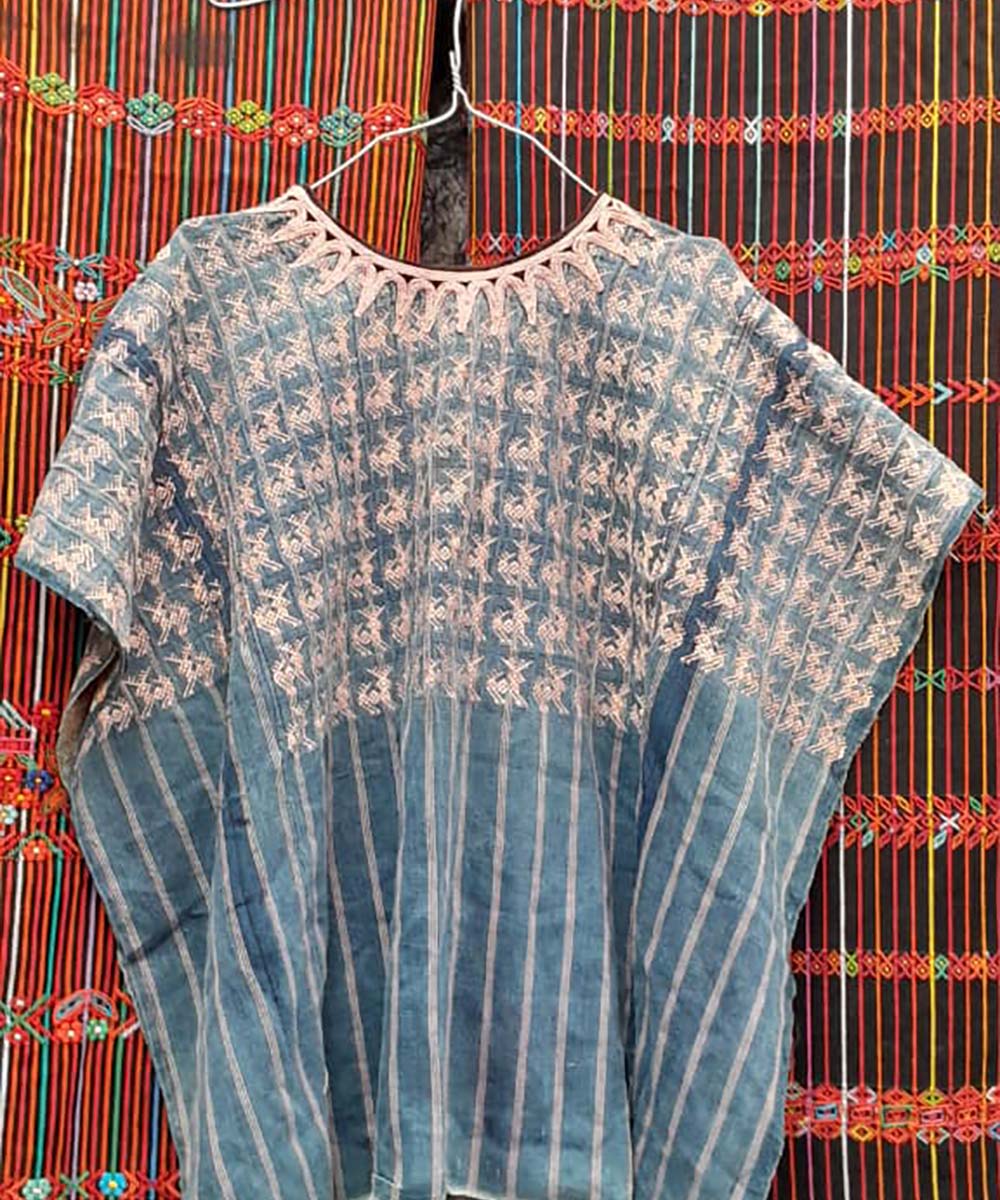
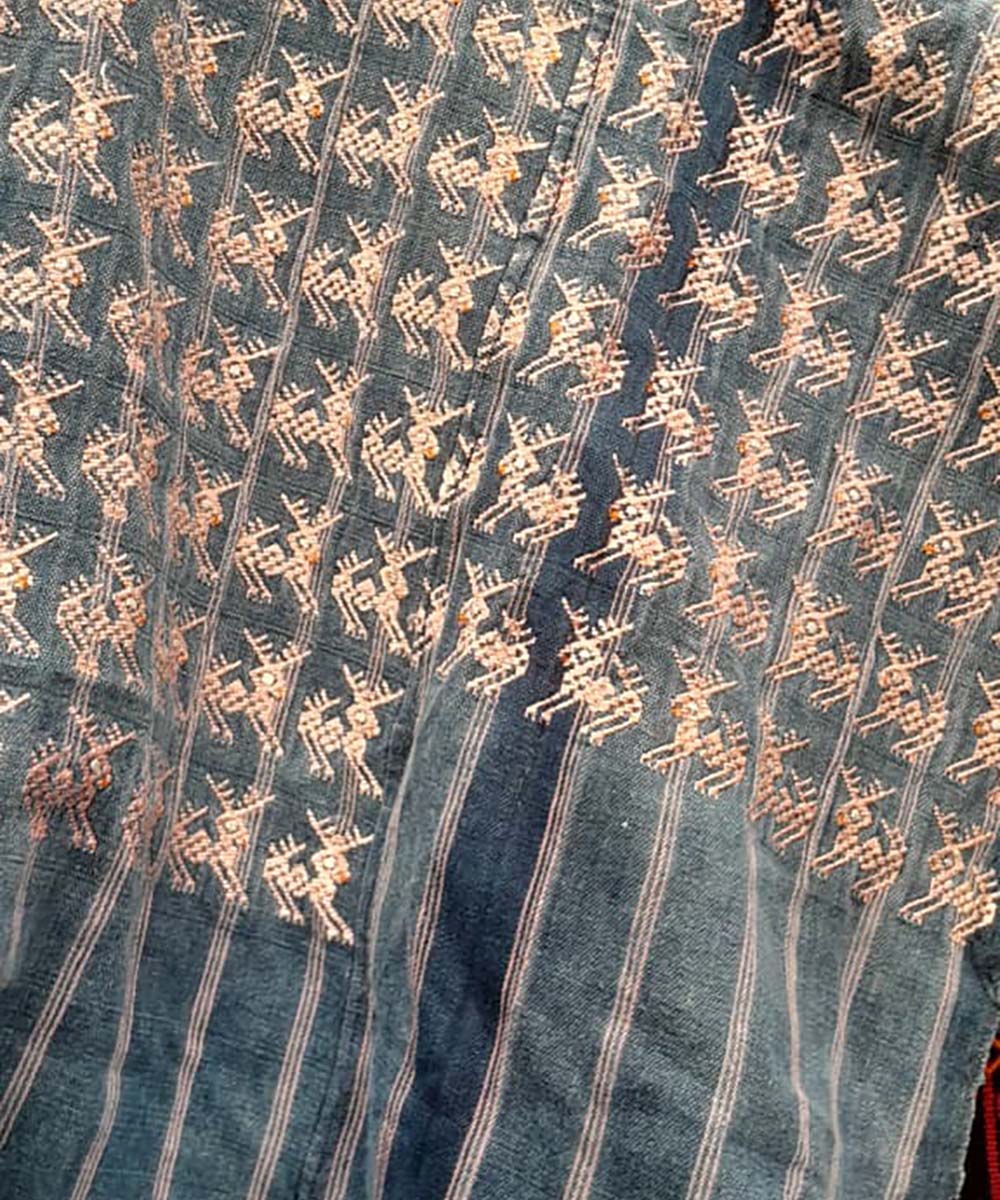
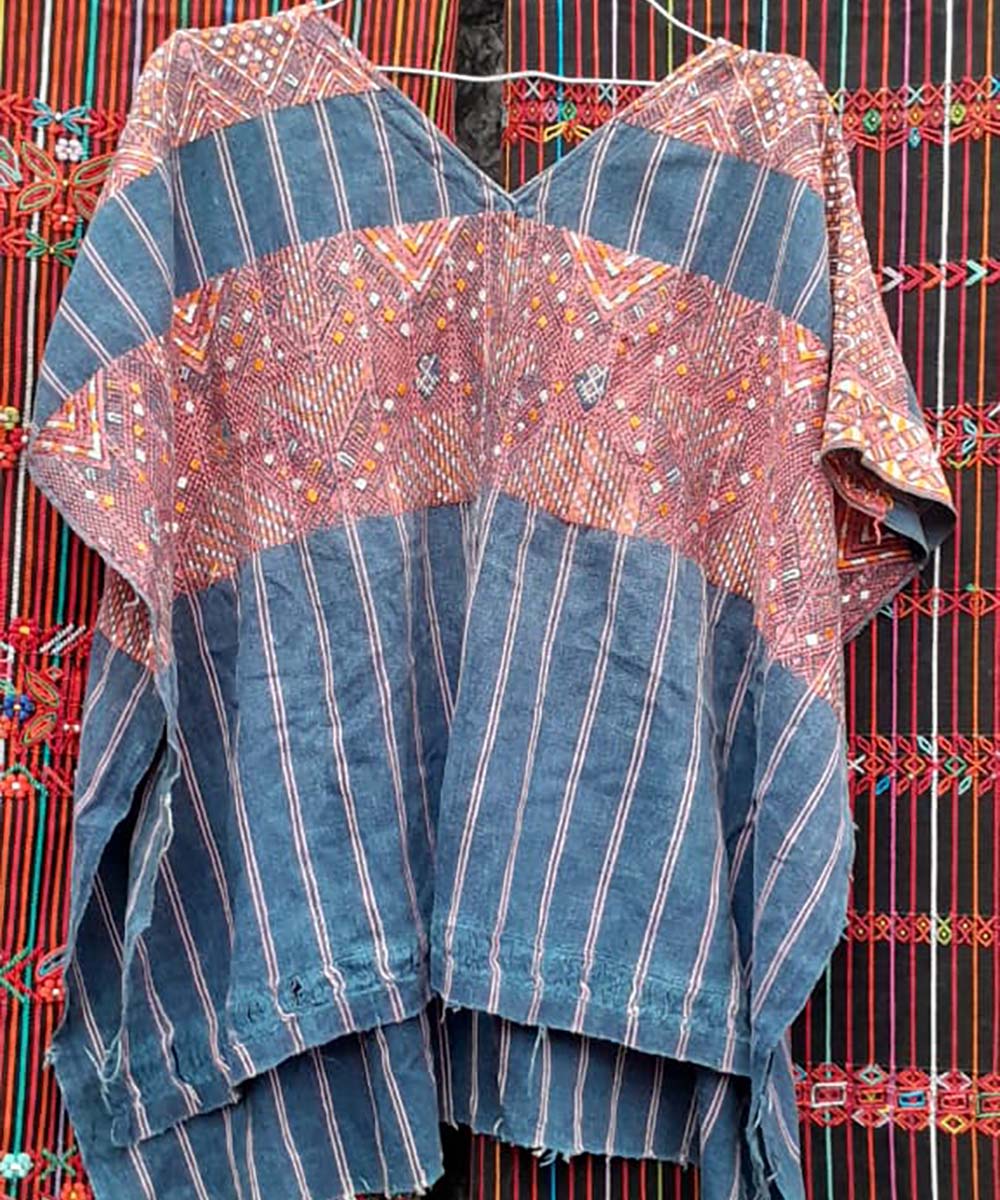

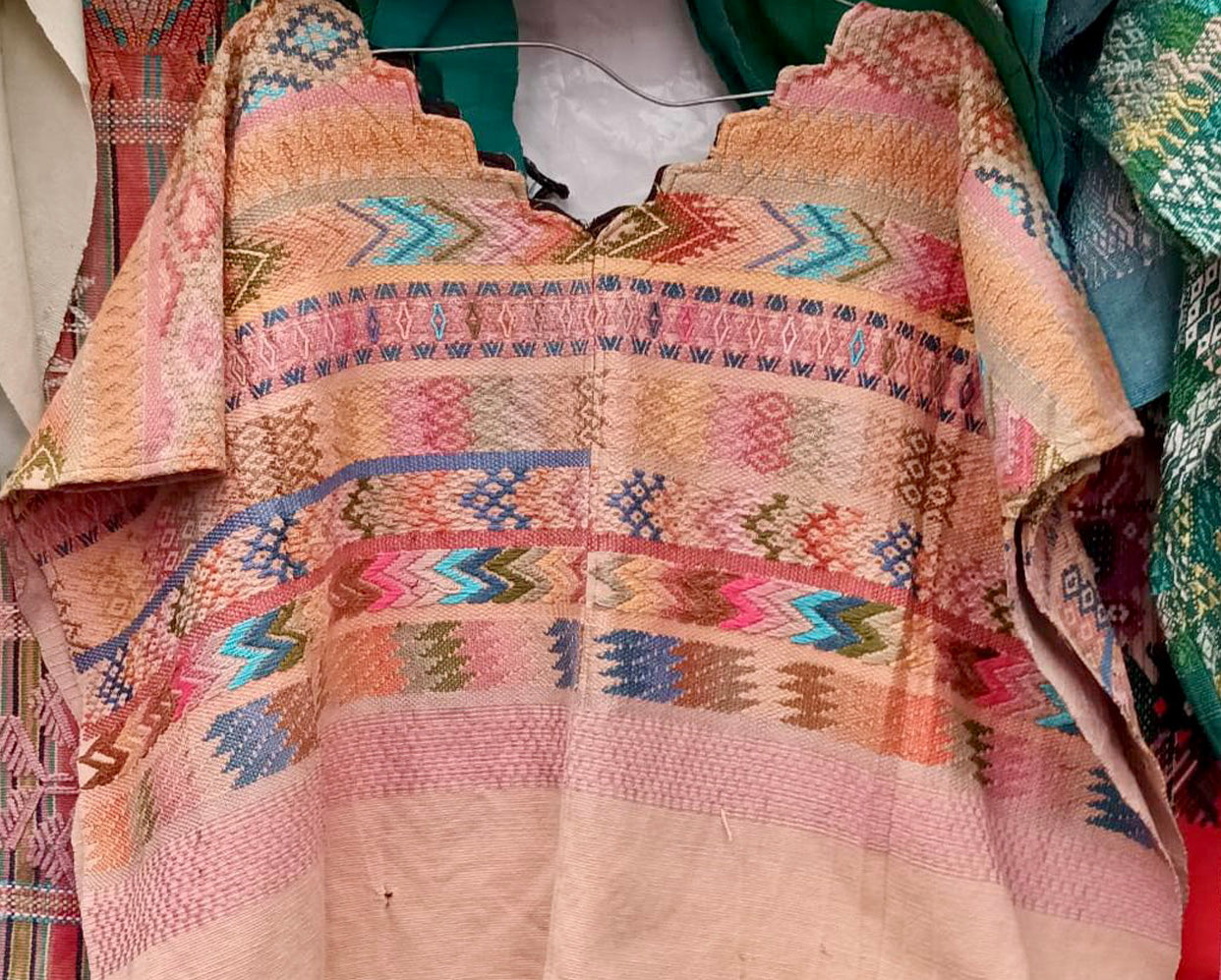
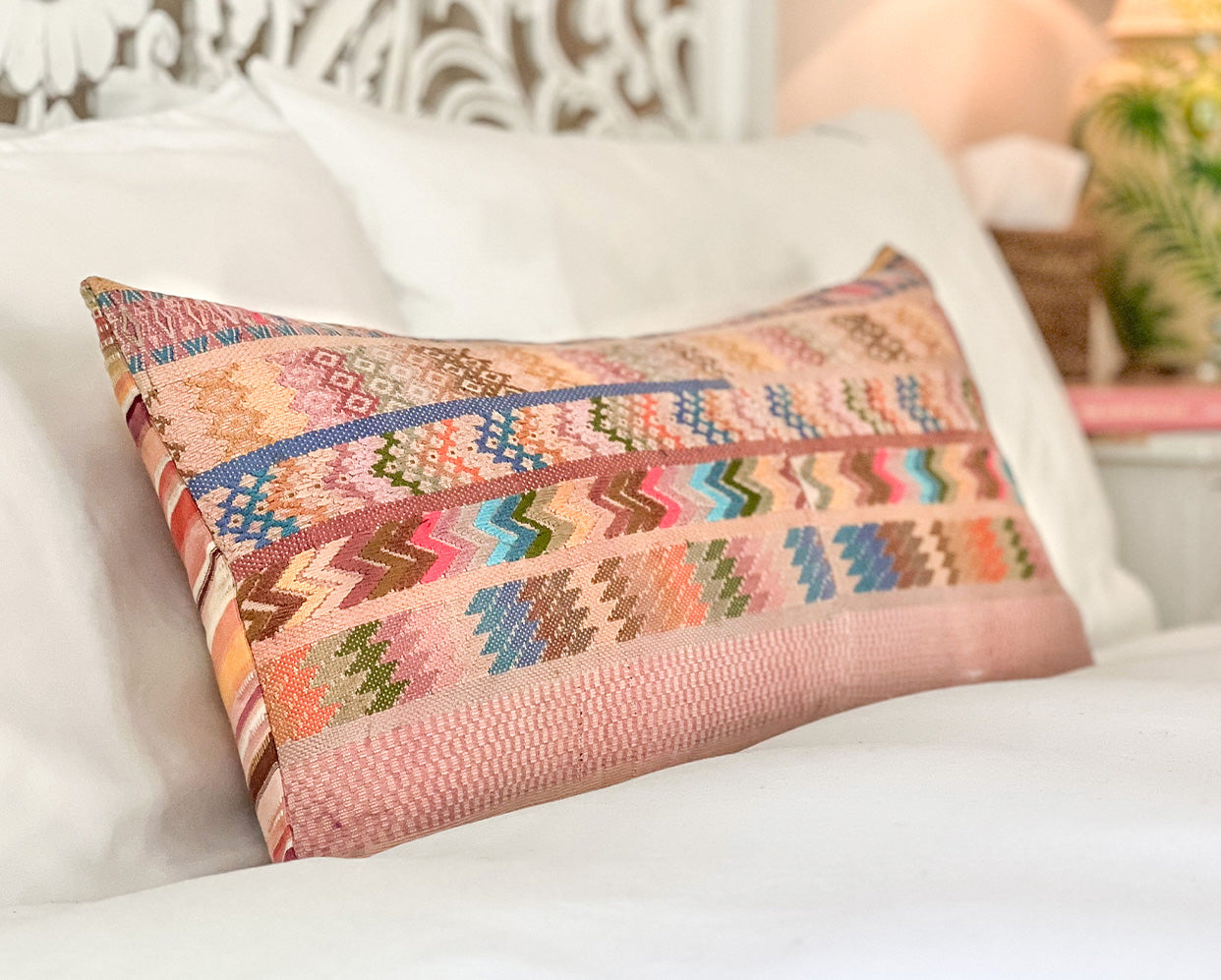
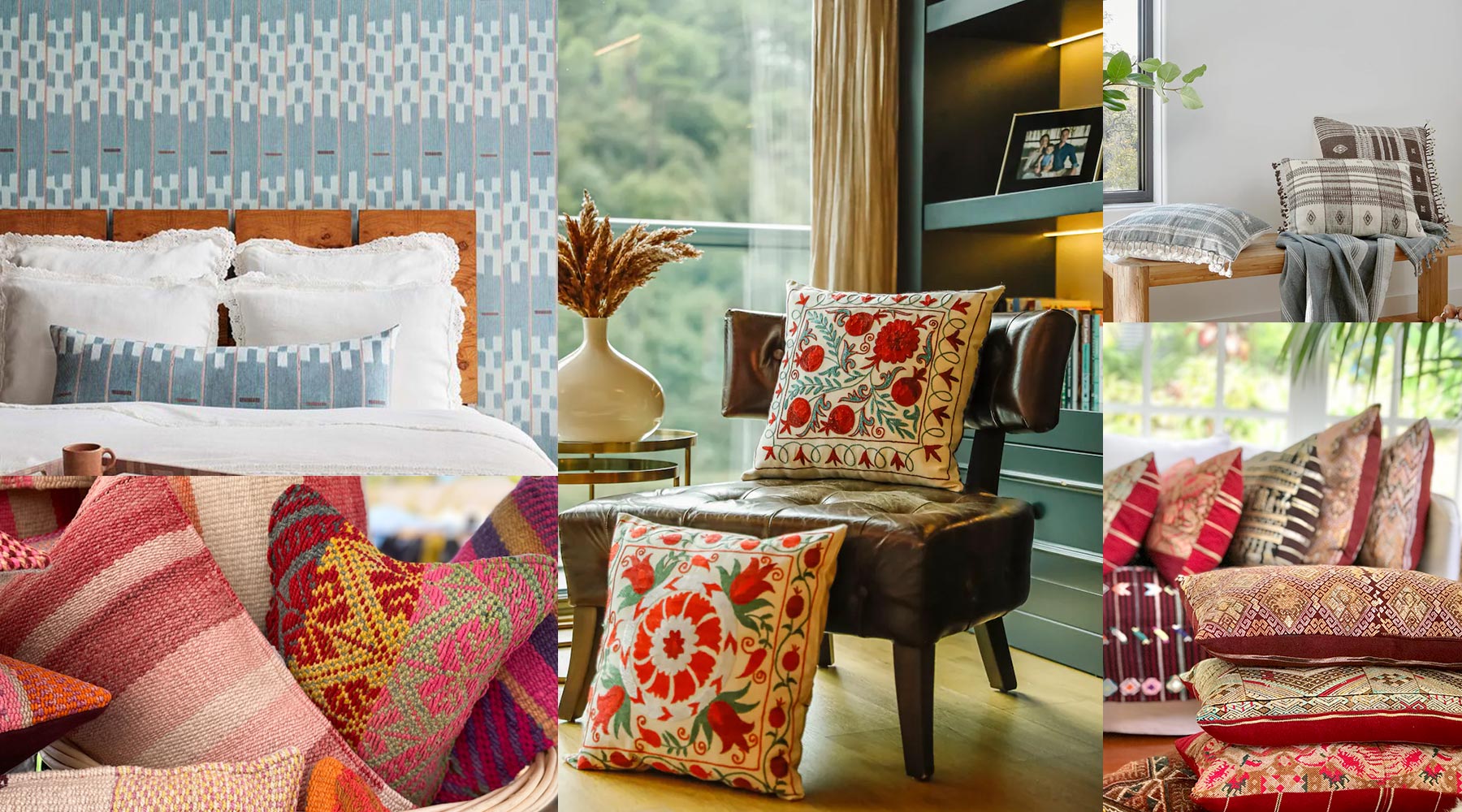
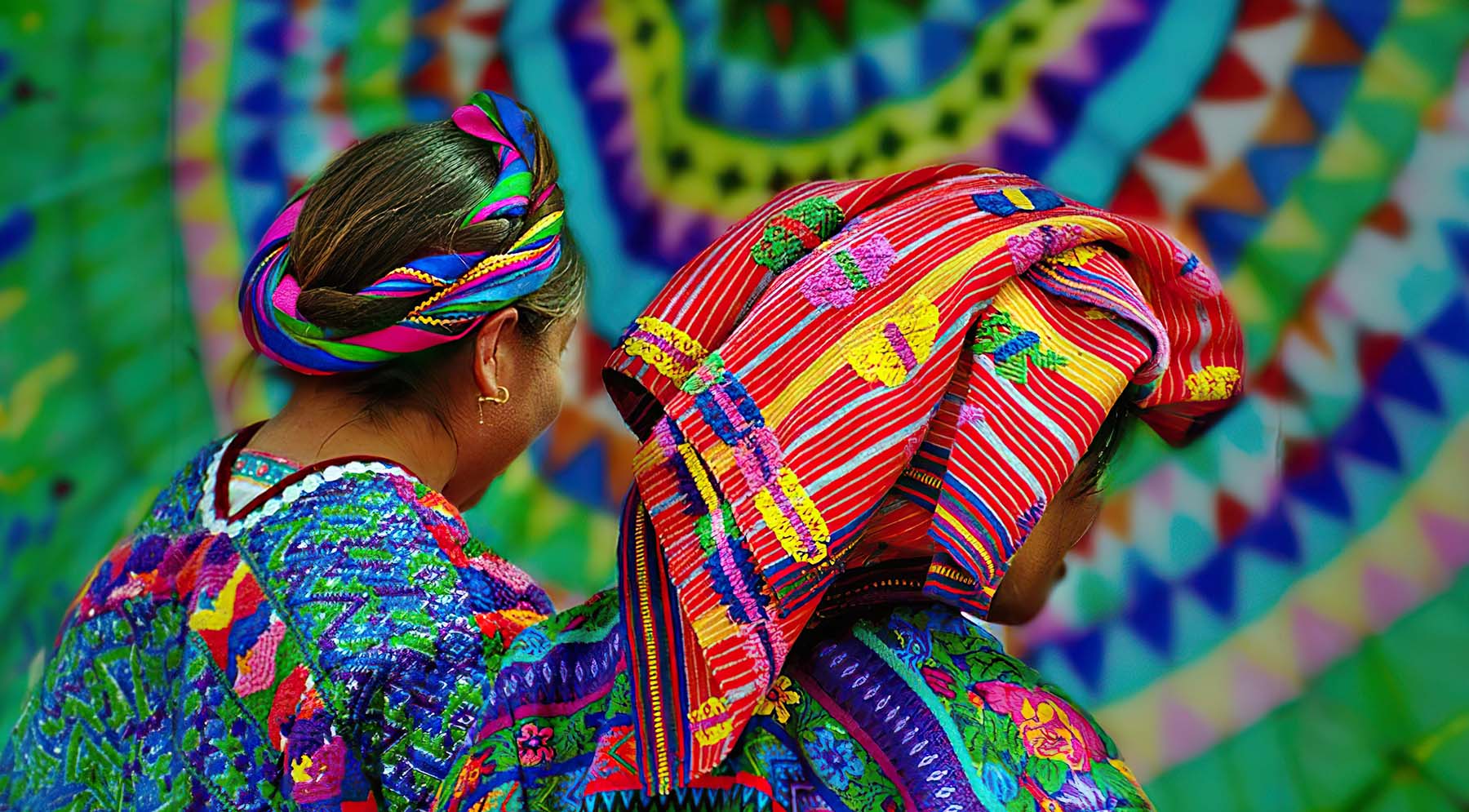
Leave a comment
This site is protected by hCaptcha and the hCaptcha Privacy Policy and Terms of Service apply.